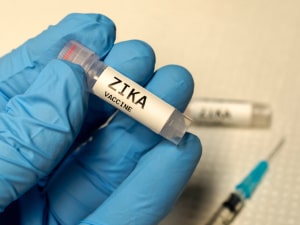7 July 2019

A new article published in the journal Frontiers in Cellular and Infection Microbiology shows that research built around human-mimetic tools are more likely to succeed in the search for effective treatments for and prevention of flavivirus infection as compared to research using monkeys or other animals as laboratory models. The study, led by Dr. David Pamies at the University of Lausanne (formerly of the Johns Hopkins Center for Alternatives to Animal Testing), with researchers at Johns Hopkins University and the National Institute of Allergy and Infectious Diseases’ Vaccines Research Center in the U.S., carried out a comprehensive review of the models used to study deadly mosquito-borne flaviviruses (MBF) such as dengue fever and the Zika virus, known to cause neurological disease in humans.
The authors report that the host specificity of viral diseases presents a challenge for studying these human viruses in animals. Vaccines that had proved successful in primate tests have failed in human trials, leading to intense research using knockout and humanized transgenic mice. Thus, human genes relevant to the capacity of the virus to infect humans have been inserted into mice, but these modified animals are still mice, and the authors recognize drawbacks to this approach: “… several factors are recognized to influence the susceptibility of mice to MBF infection that limit applicability to humans.” For example, mice fail to display human disease symptoms if bitten by an infected mosquito (the human route of infection), and the mouse immune response varies depending on the animal’s age. Furthermore, the experiments are not reproducible in different laboratories – often an issue in animal experiments.
Dr. Pamies and colleagues recommend “a future of MBF research with less reliance on primate and rodent models and an increase in in vitro and in silico studies. The emergence of new technologies (e.g. induced pluripotent stem cell models, organotypic cultures, and high throughput in silico screening) will help to better predict human pathogenesis and drug efficacy. We believe that harmonization of methods and centralization of data, together with combining different approaches to reach a common objective, are crucial to better understand MBF infection and neuropathogenesis and obtain clinical solutions.”
The authors further propose that MBF research adopt best non-animal methodology practices from other research fields, applying advances such as novel brain-specific organoids, multi-cell brain spheroid cultures, blood-brain barrier models and in silico mathematical modelling for viral replication, disease transmission and vaccine development.
The review, entitled “In vitro and in silico Models to Study Mosquito-Borne Flavivirus Neuropathogenesis, Prevention, and Treatment,” is available here.
Funding for this review was provided by Humane Society International as part of the Biomedical Research for the 21st Century (BioMed21) Collaboration.

Post a comment